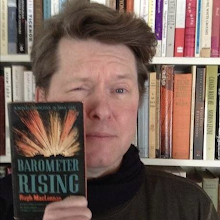John Craig
London: Cassell, 1973
223 pages
Struggling writer Dan Cramer once had a good gig. He spent two years working on Women's Editor, a daytime soap starring "beautiful blonde Jill Mason." That good gig looked to be steady until department store scion and sponsor Richard Bannister came along, married Jill, and brought the soap to a sudden end.
No star, no show.
After cancellation, Dan devoted twelve months to a script that drew the attention of Hollywood – until it didn't. Casting director Laurel Plunkett went back to working on television commercials – until she assaulted an advertising executive with a box of Crunch 'n Crackle crackers. Women's Editor producer Josh Darwin did much better in landing the interview show Dialogue with Darwin, but he is not happy. A mover and shaker, ever eager for a new project, he shares his latest idea over drinks with Dan and Laurel. Josh wants to produce a movie – a really good movie (or maybe TV special) – about a kidnapping:
"For the sake of argument suppose the three of us kidnap Jill. Start from there and use your imagination. How would we do it? What would we do to throw the police off the track? What complications would arise?"
Josh suggests they meet the next week to hash out ideas over dinner, but Dan does one better in writing a complete screenplay. The producer is so impressed that he suggests the three act out the script for real.
The premise is sound. Dan is desperate for money, Laurel has started down the same path to poverty, and both share resentment toward Jill for up and marrying rich Richard. The scene in which they decide to go along with Josh is impressive in that it is so convincing. Craig has a real talent for dialogue, something recognized in contemporary reviews.
If You Want to See Your Wife Again... is a dark comedy. Being a charitable sort, I blame laughs that fall flat on the passage of time; it has, after all, been more than a half-century since publication. The distance brings new perspective and an appreciation of the novel as one documenting the years of swingers and sexy stewardesses. Its plot is reliant on the post, pay phones, newspapers, radio, and department stores. I was so caught up in the atmosphere that I did not anticipate the twist.
I should have.
The laziest of endings, it is the most common in Canadian literature.
Trivia (personal) I: If You Want to See Your Wife Again... follows Every Man for Himself (1920) and Die with Me Lady (1953) as the third novel I've read that takes place in part on the Toronto Islands.
Trivia (personal) II: After leaving university, my first writing job was for Time of Your Life, a cheap daytime soap aired on CTV. I was one of five writers. The most unbelievable thing about If You Want to See Your Wife Again... is the idea that Dan alone would write five episodes a week.
Trivia (impersonal) III: Adapted to the small screen in 1972 as Your Money or Your Life. a CBS Tuesday Night Movie starring Ted Bessell, Elizabeth Ashley, and Jack Cassidy. You can watch it here on YouTube. I haven't yet been able to make it past the first four minutes, but will not be defeated!
About the author: John Craig is credited with over a dozen books. The author bio for If You Want to See Your Wife Again... is one of the most unusual I've ever read.
Paul Craig competed in the 1976 Montreal Olympics, but as not awarded a medal. Younger brother John qualified for the 1980 Moscow Olympics, but did not participate due to the boycott.
Object and Access: My first British edition appeared in stores two years after the true first, published in 1971 by Putnam. A Dell mass market paperback (above) followed in 1974, after which the novel fell out of print.
There have been four translations: French (La malle et la belle) German (Geschäft mit der Todesangst), Spanish (Quieres ver a tu mujer otra vez?), and Danish (Men i sm a sedler!), all published between 1972 and 1974. The French appears to have enjoyed at least two editions, one of which features this curious cover:
The only automobiles that figure in the novel are Laurel's beat-up MG (she's a horrible driver) and a VW Beetle. The artist seems to have been unfamiliar with North American pay phones.

































